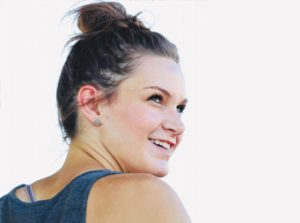Fashion, Fυnction, and Protection – Avoiding Sun Damage
Click here to read the complete article316 – October, 2018
By Kristen Spinning
 One of the great joys of riding is being outdoors with plenty of fresh air and sunshine. While sunshine has mood elevating effects and promotes vitamin D absorption, it’s best taken in moderation. The damaging effects of the sun’s rays are well-known: sunburn, wrinkles, brown spots, eye damage, premature aging, and skin cancer top the list. According to the University of Arizona’s Skin Cancer Institute, nearly 3.5 million cases of skin cancers are diagnosed in the U.S. annually, and the vast majority of them are caused by solar UV radiation. Tragically, the incidence of melanoma in teenagers has increased by 100% over the past 10 years. Yet, less than 40% of people report using some sort of sun protection most of the time. Horse people are at a greater risk than the general population by the very nature of what we do.
One of the great joys of riding is being outdoors with plenty of fresh air and sunshine. While sunshine has mood elevating effects and promotes vitamin D absorption, it’s best taken in moderation. The damaging effects of the sun’s rays are well-known: sunburn, wrinkles, brown spots, eye damage, premature aging, and skin cancer top the list. According to the University of Arizona’s Skin Cancer Institute, nearly 3.5 million cases of skin cancers are diagnosed in the U.S. annually, and the vast majority of them are caused by solar UV radiation. Tragically, the incidence of melanoma in teenagers has increased by 100% over the past 10 years. Yet, less than 40% of people report using some sort of sun protection most of the time. Horse people are at a greater risk than the general population by the very nature of what we do.
Lisa Quale, Health Educator for the University of Arizona Cancer Center, Skin Cancer Institute, explains why UV radiation is harmful. The main components are the long-wave ultraviolet A (UVA) and shortwave ultraviolet B (UVB) rays. UVB is the chief cause of skin reddening and sunburn. It tends to damage the skin’s more superficial epidermal layers. It plays a key role in the development of skin cancer and is the target of sunscreens.
UVA penetrates the skin more deeply than UVB. It has long been known as a major culprit in skin aging and wrinkling. More recently, scientists have discovered that UVA also damages skin cells, called keratinocytes, in the basal layer of the epidermis. That’s where most skin cancers occur. Thus, it is believed that UVA also contributes to, and may even initiate, the development of skin cancer. “Broad spectrum protection is a MUST!” Quale says. “It protects the skin from both UVA and UVB, so it covers the full spectrum of radiation.”
Dr. Robyn Glaesser, a dermatologist at Ironwood Dermatology in Arizona, reminds patients that year-round protection is key. “Ultraviolet rays can get to you even if you aren’t exposed under a clear blue sky,” she says. “Riding in a car or truck is a significant source of cumulative sun exposure, and even overcast days don’t protect you from damage. Make it a rule: If you’re going outside, wear sun protection.”
Only about 10% of kids routinely protect themselves from the sun. “You’re never too young to start wearing an age-appropriate sunscreen,” Dr. Glaesser says. “One risk factor for skin cancer later in life is frequent sunburns—especially those that blister—in childhood. Develop good skincare habits young, and encourage those around you to do the same.” Youth riders tend to be much more focused on their horses than on sunscreen. “Getting kids to cover up and wear sunscreen is a challenge, but it’s so necessary to maintain skin health and lower skin cancer risk later in life,” Quale says. The good news is that there are plenty of ways for riders, both young and old, to minimize sun damage, maximize comfort, and look great while doing it.
Click here to read the complete article316 – October, 2018










